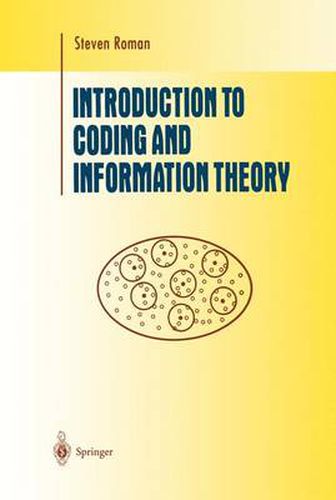Readings Newsletter
Become a Readings Member to make your shopping experience even easier.
Sign in or sign up for free!
You’re not far away from qualifying for FREE standard shipping within Australia
You’ve qualified for FREE standard shipping within Australia
The cart is loading…






This title is printed to order. This book may have been self-published. If so, we cannot guarantee the quality of the content. In the main most books will have gone through the editing process however some may not. We therefore suggest that you be aware of this before ordering this book. If in doubt check either the author or publisher’s details as we are unable to accept any returns unless they are faulty. Please contact us if you have any questions.
This book is intended to introduce coding theory and information theory to undergraduate students of mathematics and computer science. It begins with a review of probablity theory as applied to finite sample spaces and a general introduction to the nature and types of codes. The two subsequent chapters discuss information theory: efficiency of codes, the entropy of information sources, and Shannon’s Noiseless Coding Theorem. The remaining three chapters deal with coding theory: communication channels, decoding in the presence of errors, the general theory of linear codes, and such specific codes as Hamming codes, the simplex codes, and many others.
$9.00 standard shipping within Australia
FREE standard shipping within Australia for orders over $100.00
Express & International shipping calculated at checkout
This title is printed to order. This book may have been self-published. If so, we cannot guarantee the quality of the content. In the main most books will have gone through the editing process however some may not. We therefore suggest that you be aware of this before ordering this book. If in doubt check either the author or publisher’s details as we are unable to accept any returns unless they are faulty. Please contact us if you have any questions.
This book is intended to introduce coding theory and information theory to undergraduate students of mathematics and computer science. It begins with a review of probablity theory as applied to finite sample spaces and a general introduction to the nature and types of codes. The two subsequent chapters discuss information theory: efficiency of codes, the entropy of information sources, and Shannon’s Noiseless Coding Theorem. The remaining three chapters deal with coding theory: communication channels, decoding in the presence of errors, the general theory of linear codes, and such specific codes as Hamming codes, the simplex codes, and many others.